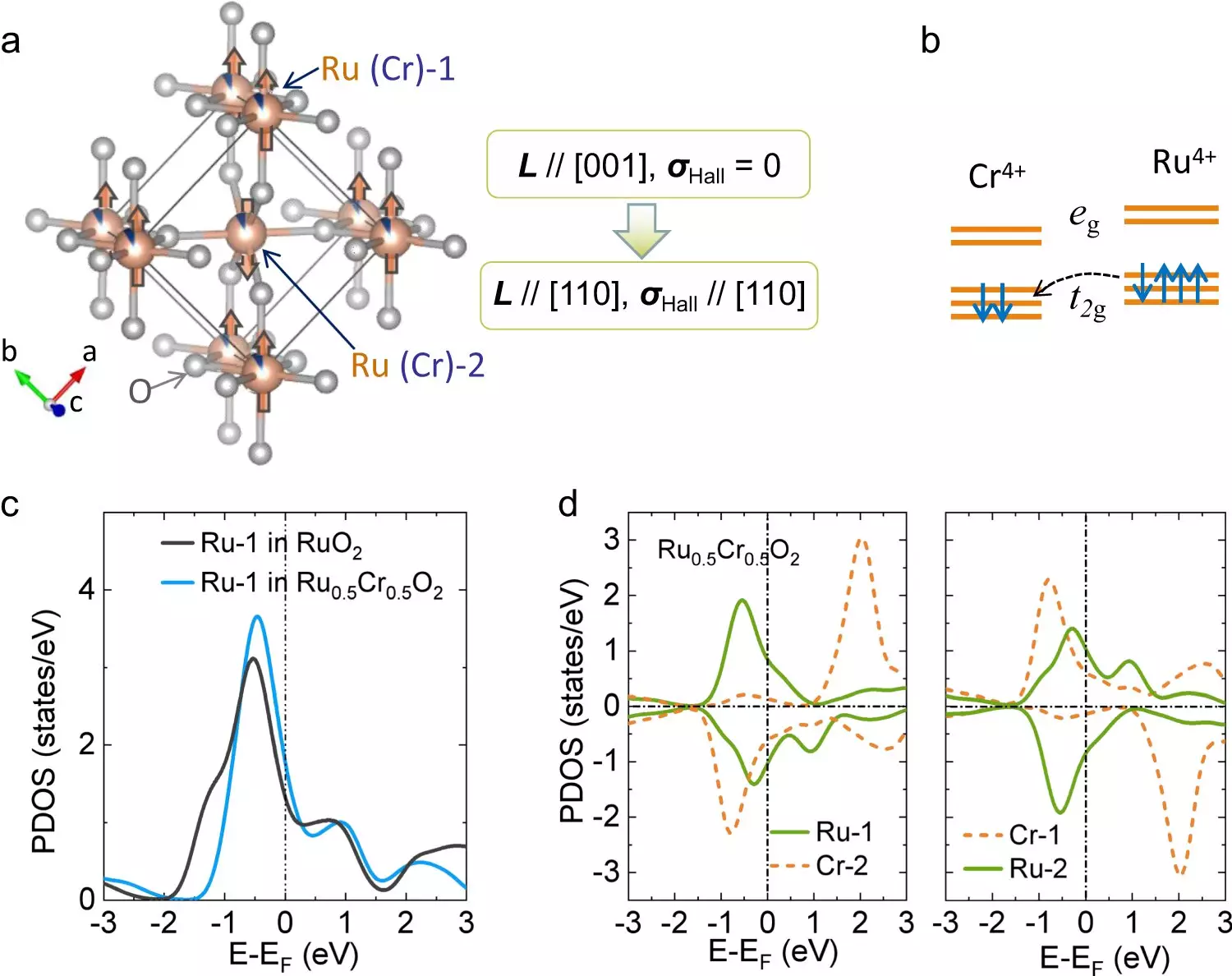In a groundbreaking new study published in Nature Communications, RIKEN physicists have introduced a new magnetic material that has the potential to revolutionize computer memory storage. This innovation could lead to increased memory density and faster memory writing speeds, addressing the current limitations of traditional ferromagnetic materials such as iron and cobalt.
The Limitations of Ferromagnets
Traditional memory devices, like hard disks, rely on ferromagnetic materials to store data by creating different magnetization patterns. However, ferromagnets are not without their drawbacks. Neighboring areas can interfere with each other, leading to spontaneous magnetization and data corruption. This limitation restricts the memory density that can be achieved with ferromagnetic materials. Additionally, the process of switching magnetization patterns in ferromagnets is slow, hampering memory writing speeds.
To overcome these challenges, physicists have turned their attention to antiferromagnetic materials, where the magnetic fields of adjacent atoms align in opposing directions. While antiferromagnets have shown promise for data storage, the inability to observe magnetization in these materials posed a significant obstacle. However, a phenomenon known as the “anomalous Hall effect” opened up new possibilities for manipulating electrons in antiferromagnetic materials.
In a recent experiment, Wang and his team successfully demonstrated the anomalous Hall effect in an antiferromagnetic metal composed of ruthenium and oxygen. By introducing a small amount of chromium to the crystal structure, they were able to induce the anomalous Hall effect without the need for an external magnetic field. This breakthrough represents the first time that the anomalous Hall effect has been observed in a simple co-linear structure, making it a promising candidate for practical applications.
Potential Implications for Memory Storage
The unique properties of this new magnetic material pave the way for advancements in computer memory storage. Its ease of fabrication in thin films makes it a practical option for commercial applications. By leveraging the anomalous Hall effect, researchers could develop memory devices with higher density and faster writing speeds, ultimately enhancing the performance of computer systems.
The discovery of the anomalous Hall effect in antiferromagnetic metals represents a significant milestone in the field of magnetic materials research. By harnessing the unique characteristics of this new material, scientists are poised to unlock the full potential of computer memory storage. As further research is conducted and new technologies are developed, the impact of this breakthrough could reshape the landscape of computing and data storage in the years to come.


Leave a Reply